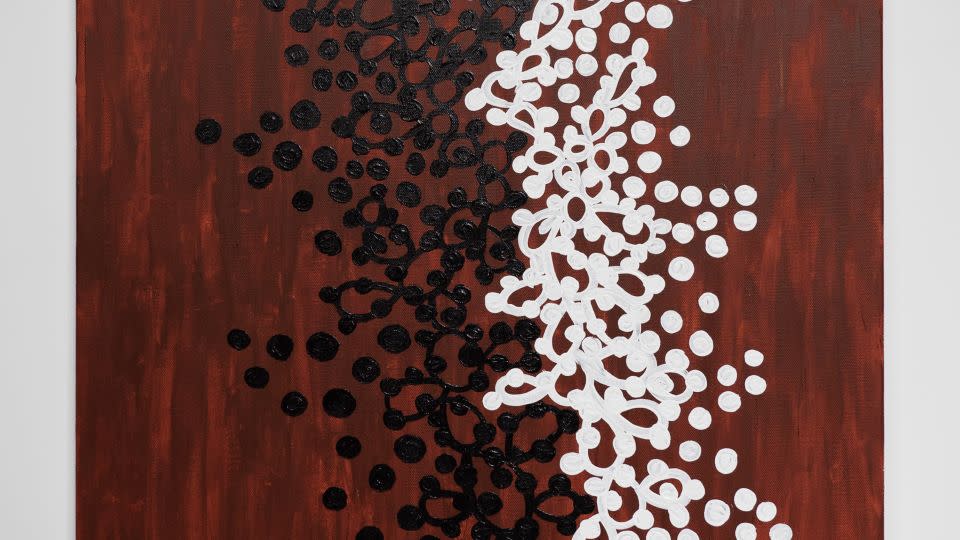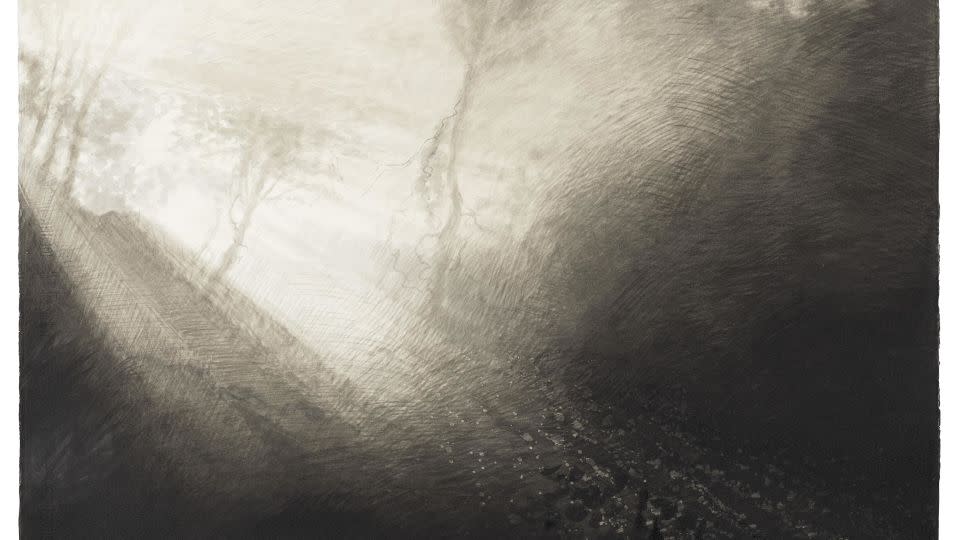‘Guardians of the forest’: How art made from the ashes of Amazon Rainforest fires is helping Indigenous communities
Editor’s Note: Call to Earth is a CNN editorial series committed to reporting on the environmental challenges facing our planet, together with the solutions. Rolex’s Perpetual Planet initiative has partnered with CNN to drive awareness and education around key sustainability issues and to inspire positive action.
Perched on a branch amidst the cover of darkness is a Xingu screech owl with piercing, fiery amber eyes. Created by British artist Sarah Ball, the artwork is titled “Megascops Stangiae,” referring to the scientific name of this species only found in the Indigenous Xingu region of Brazil.
The striking work is unique not just for its subject matter, but for how it was made: the owl’s primarily black and gray pastels were created with ash left behind after wildfires in the Amazon rainforest.
It’s part of a project called “From the Ashes,” an exhibition that ran in February at London’s Truman Brewery. Featuring 29 Indigenous and non-Indigenous artists, all the works were created using ink, pigment and pastels manufactured from ash and charcoal “salvaged from the burnt remnants of the Amazon,” says Migrate Art, the London-based social enterprise that created the project.
In partnership with arts research center People’s Palace Projects, the goal is to help combat damage from the fires by raising money for Indigenous communities on the front lines.
In March, the artworks will be auctioned at Christie’s London with estimates for individual pieces ranging from £2,000 ($2,530) to over £50,000 ($63,440), according to Simon Butler, founder of Migrate Art and a participating artist in the exhibition.
“We keep 20% of what we make, that’s for overheads and rent. The rest of it goes to the Indigenous Xingu community, primarily for firefighting equipment,” he said. “All these ideas of what to do with the money, they’re not coming from us, they’re coming from the community themselves. When we were there, we had meetings with them and they talked about the fire brigade they wanted to develop, and they also talked about regrowing trees and reforesting.”

The Amazon rainforest, which is crucial for trapping and storing carbon emissions, is facing a tipping point by 2050 that could have devastating consequences. According to the non-profit Amazon Aid, the primary driver of wildfires in the Amazon rainforest is deforestation for agriculture, logging, and other economic opportunities.
Takumã Kuikuro, a filmmaker and curator from the Indigenous territory in Brazil’s Amazon basin, calls the Indigenous community “guardians of the forest.”
“We are the main victims of climate change,” he said. “Since the violent fires of 2019 to 2022, we have been suffering from extreme heat and drought that threaten animals, trees, rivers and food crops such as cassava, the basis of our diet, which are not thriving due to lack of rain.”
Can art change the world?
Butler visited the Amazon rainforest and its Indigenous Xingu communities two years ago. Witnessing the areas of the forest that had been burnt down, which he describes as a “red desert that looked like the end of the world,” motivated him to create change in the way he knew best: through art.
Inspired by the success of Migrate Art’s previous exhibitions, such as “Scorched Earth,” which featured art made from the ash of war zones in Iraqi Kurdistan, Butler collected the charred remains of the rainforest, and shipped it back to London to be made into art materials.
The materials were then sent to artists around the world. British artist Piers Secunda, whose work focuses on the destruction of culture, used black ink to create a painting titled “Smoke In The Jungle.”

“The sale of my work to help the Xingu Reserve buy firefighting equipment, to extinguish Amazon fires, is the best use of my time and resources that I can imagine,” he said.
The collection also includes works made by members of the Indigenous community, such as three paintings by Kamo Waurá, a village shaman.
“To see art without any kind of influence from the market for financial reasons is amazing,” said Butler. “It’s pure storytelling.”
Ultimately, Migrate Art asks a single question: “Can art change the world?” Secunda likens art to a sharp stick which can “prod the right people into action, to publicly embarrass organizations, governments and individuals who are causing damage, or to raise funds.”
“These art advocacy actions are grains of sand which build a pile,” he added. “For now, the pile is small, but it is growing and will become substantial.”
For more CNN news and newsletters create an account at CNN.com

